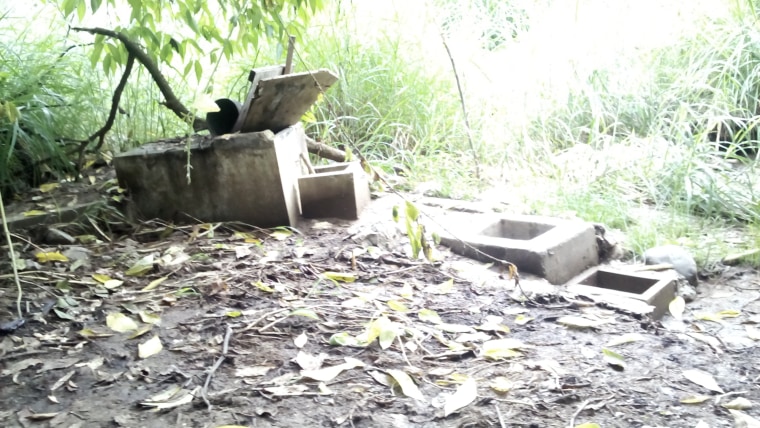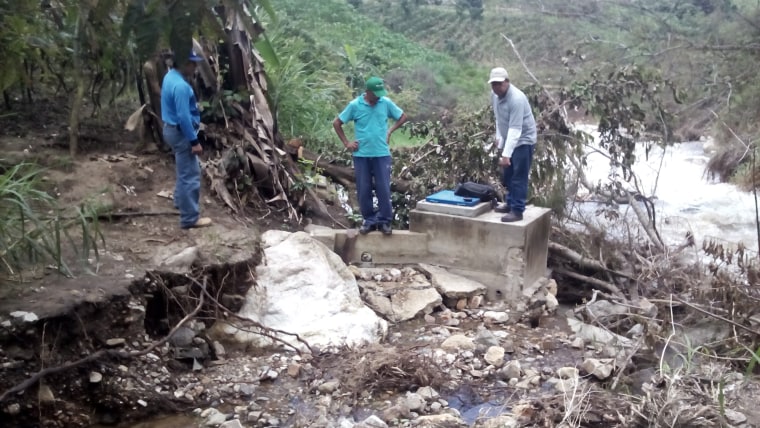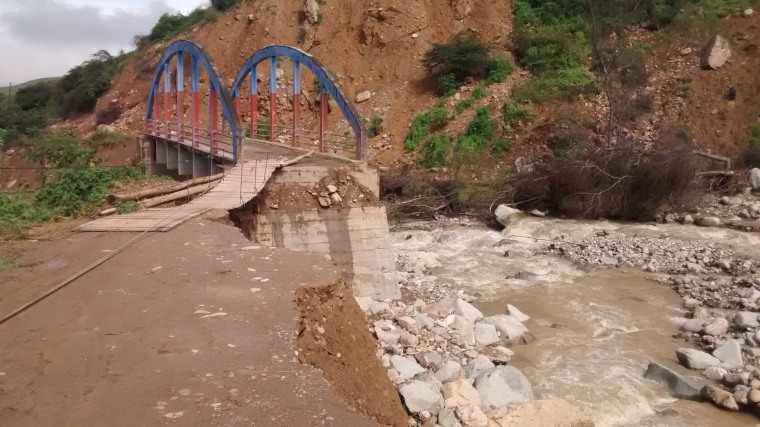
One month after Peru’s disastrous mudslides that killed over 100 people and left 150,000 homeless, one nonprofit is working to restore safe drinking water in the same areas where they had already helped provide potable water in recent years.
Since 2011 Water For People has been working to provide potable water in the area of Cascas and Asunción in northeastern Peru. The Colorado-based international nonprofit works in 9 countries to help achieve access to safe drinking water,
Until the group became involved in these areas, some local residents would often get their water supply from rivers.
“In other cases, residents would dig a well on the side of their house and they would use it to store spring water,” said Francisco Soto, country director for Water For People in Peru. Soto tells NBC Latino that in 2011, about 95 percent of the children in Cascas had parasites related to the drinking water and to inadequate sanitation.
Safe drinking water is essential for basic human health; according to the UN, at least 1.8 billion people around the world use drinking water that is fecally contaminated. As a result, almost 1,000 children die each day because of water and sanitation related diarrheal diseases. Floods and other catastrophes account for 70 percent of deaths related to natural disasters.
The goal of Water For People has been to reach 100 percent of homes in rural and urban areas of Cascas and Asunción by 2018. After six years, the project was close to reaching its goal with over 83 percent of the local population in Cascas having drinking water in their homes.
But last month, torrential rains caused rivers to overflow, flooding many towns, including Cascas, which has a population of about 14,000. Cascas has 37 water systems and 26 of them were damaged by the floods and mudslides, leaving the majority of residents without potable water.

“With flooding and mudslides all kinds of infrastructures have been affected including, and perhaps arguably, most importantly, the drinking water systems which either have become contaminated or have gone offline and no longer provide service in some of the places where we are working,” said Mark Duey, Water for People's regional director for Latin America.
The flooding was so bad that staff from the organization were unable to reach the Cascas area until last week. A river runs parallel to the main road that leads to Cascas and the flooding disappeared portions of that road.
This was the worst flood Peru has seen in almost 20 years. Experts say the rain was caused by a coastal El Niño, which is a sudden warming of the sea nearby. It took authorities by surprise. The government declared a state of emergency and asked for international aid.
Peru’s president Pedro Pablo Kuczynski blamed climate change and El Niño for the disaster and has said prepping for the next big one is more urgent than ever.
Still, area residents in Cascas and the Water for People staff are moving toward their goal.
“It’s a difficult situation. It’s a challenge,” Soto said by phone from Peru. But he added that he did not become disappointed over their setback after the floods because “you see the effort by the people and their desire to overcome the situation they are facing.”

Water For People was established in 1991 to promote the development of high-quality drinking water and sanitation services around the world. In Latin America, it works in Guatemala, Honduras, Nicaragua, Peru, and Bolivia. The nonprofit also works in Uganda, Rwanda, Malawi, and India.
“Our model is based on working with local governments and national governments to work towards achieving universal access to safe drinking water in urban and rural areas,” said Duey.
The floods have made Soto and others focus on not just rebuilding, but planning for the unforeseen. “This has forced us to think about solutions to confront situations if they present themselves in the future,” Soto said. There is still risk for more flooding until the wet season ends in May.
